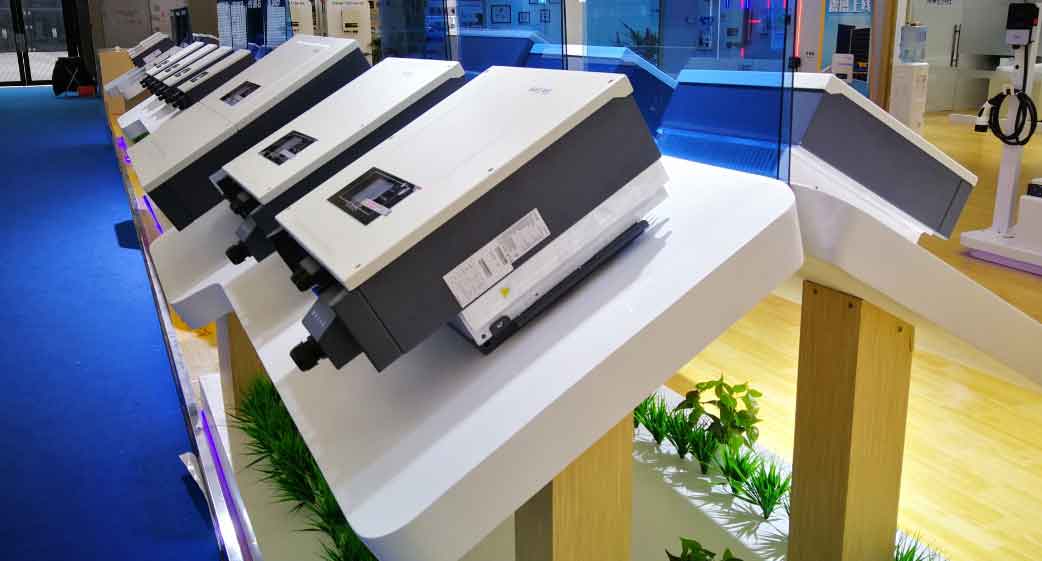Introduction
The rapid growth of renewable energy integration, particularly photovoltaic (PV) systems, has intensified the demand for advanced energy storage inverter. These inverters play a pivotal role in stabilizing grid operations, managing power fluctuations, and ensuring efficient energy distribution. This study focuses on a 10 kW single-phase energy storage inverter, addressing challenges such as unstable dynamic responses and uneven power distribution in parallel systems. By integrating a Virtual Synchronous Generator (VSG) strategy with adaptive frequency control and quantum-optimized algorithms, the proposed system enhances grid stability and power-sharing accuracy.

Circuit Design for Energy Storage Inverter
Bidirectional DC/DC Converter
The bidirectional DC/DC converter is critical for interfacing battery storage with the DC bus. A half-bridge topology was selected due to its low voltage stress and minimal switching losses. Key design parameters include:
- Inductor: ( L = 1 \, \text{mH} ), rated for 151.8 A peak current.
- Capacitors: ( C{\text{BAT}} = 1 \, \mu\text{F} ), ( C{\text{BUS}} = 1 \, \mu\text{F} ).
- Switching devices: IGBTs (1000 V/240 A) and diodes (1200 V/290 A).
The converter operates in two modes:
- Boost Mode (Battery-to-BUS): [ D{\text{boost}} = 1 – \frac{U{\text{BAT}}}{U{\text{BUS}}} ] For ( U{\text{BAT}} = 240 \, \text{V} ) and ( U{\text{BUS}} = 450 \, \text{V} ), ( D{\text{boost}} = 47\% ).
- Buck Mode (BUS-to-Battery): [ D{\text{buck}} = \frac{U{\text{BAT}}}{U{\text{BUS}}} ] For ( U{\text{BUS}} = 460 \, \text{V} ), ( D_{\text{buck}} = 43.5\% ).
DC/AC Inverter Using Heric Topology
The Heric topology minimizes leakage currents and improves efficiency. Key components:
- Filter inductors: ( L_f = 0.2 \, \text{mH} \times 2 ).
- Filter capacitor: ( C_f = 10 \, \mu\text{F} ).
- Switching frequency: ( f_s = 20 \, \text{kHz} ).
The output voltage ( U_{\text{grid}} ) is regulated through SPWM modulation, achieving 220 V/50 Hz with THD < 3%.
VSG-Based Power Sharing Strategy
Virtual Synchronous Generator Principles
The VSG emulates synchronous generator dynamics using: [ P{\text{VSG}} = P{\text{ref}} + k_p (\omega{\text{ref}} – \omega) – J \frac{d\omega}{dt} – D (\omega – \omega{\text{grid}}) ] where ( J ) (inertia) and ( D ) (damping) determine system stability.
Decoupling Analysis for Parallel Systems
Power sharing in parallel energy storage inverter requires impedance matching. For two inverters with capacity ratio ( N ): [ \frac{k{p1}}{k{p2}} = \frac{D_1}{D_2} = \frac{J_1}{J_2} = N ] Virtual impedance ( Z_v = jX_v ) ensures inductive dominance, enabling accurate reactive power distribution.
Adaptive Frequency Control
A frequency-adaptive algorithm dynamically adjusts ( J ) and ( D ): [ \Delta J = k_1 \left| \frac{d\omega}{dt} \right|^{m_1}, \quad \Delta D = \frac{1}{J} \Delta J ] Boundary conditions for stability: [ 4.794 \leq J \leq 16.572, \quad 1204.2 \leq D \leq 1751.6 ]
Quantum-Optimized Parameter Tuning
The Quantum Artificial Bee Colony (QABC) algorithm enhances parameter optimization:
- Solution initialization: [ x_{ik}^{(0)} = L_k + \text{rand}(0,1) \times (U_k – L_k) ]
- Fitness function: [ \text{Fitness} = \int_0^{T_a} t |e(t)| dt + \text{THD}u + \text{THD}i ]
- Chaotic search: Tent mapping improves global exploration.
Table 1: QABC Performance Comparison
| Metric | Traditional VSG | QABC-Optimized VSG |
|---|---|---|
| Frequency Overshoot | 0.71% | 0.38% |
| Recovery Time (s) | 0.455 | 0.373 |
| THD Reduction | 15.64% (current), 16.3% (voltage) |
Experimental Validation
Hardware Prototype and Testing
A 10 kW energy storage inverter prototype was tested under grid-connected, islanded, and parallel modes. Key results:
Table 2: Power Sharing Accuracy
| Load (kW) | Traditional VSG Error | QABC VSG Error |
|---|---|---|
| 16 | 4.8% | 1.2% |
| 30 | 6.1% | 1.8% |
| 40 | 7.3% | 2.1% |
Dynamic Response Enhancement
The QABC algorithm reduced circulating currents by 50% and improved transient response by 64.63% in active power sharing.
Conclusion
This work demonstrates that integrating VSG control with quantum-optimized adaptive algorithms significantly enhances the performance of energy storage inverter in parallel configurations. The proposed strategy ensures stable frequency regulation, accurate power distribution, and improved harmonic suppression, making it viable for large-scale renewable energy integration. Future work will explore multi-objective optimization for hybrid energy storage systems and fault-tolerant control under grid disturbances.
